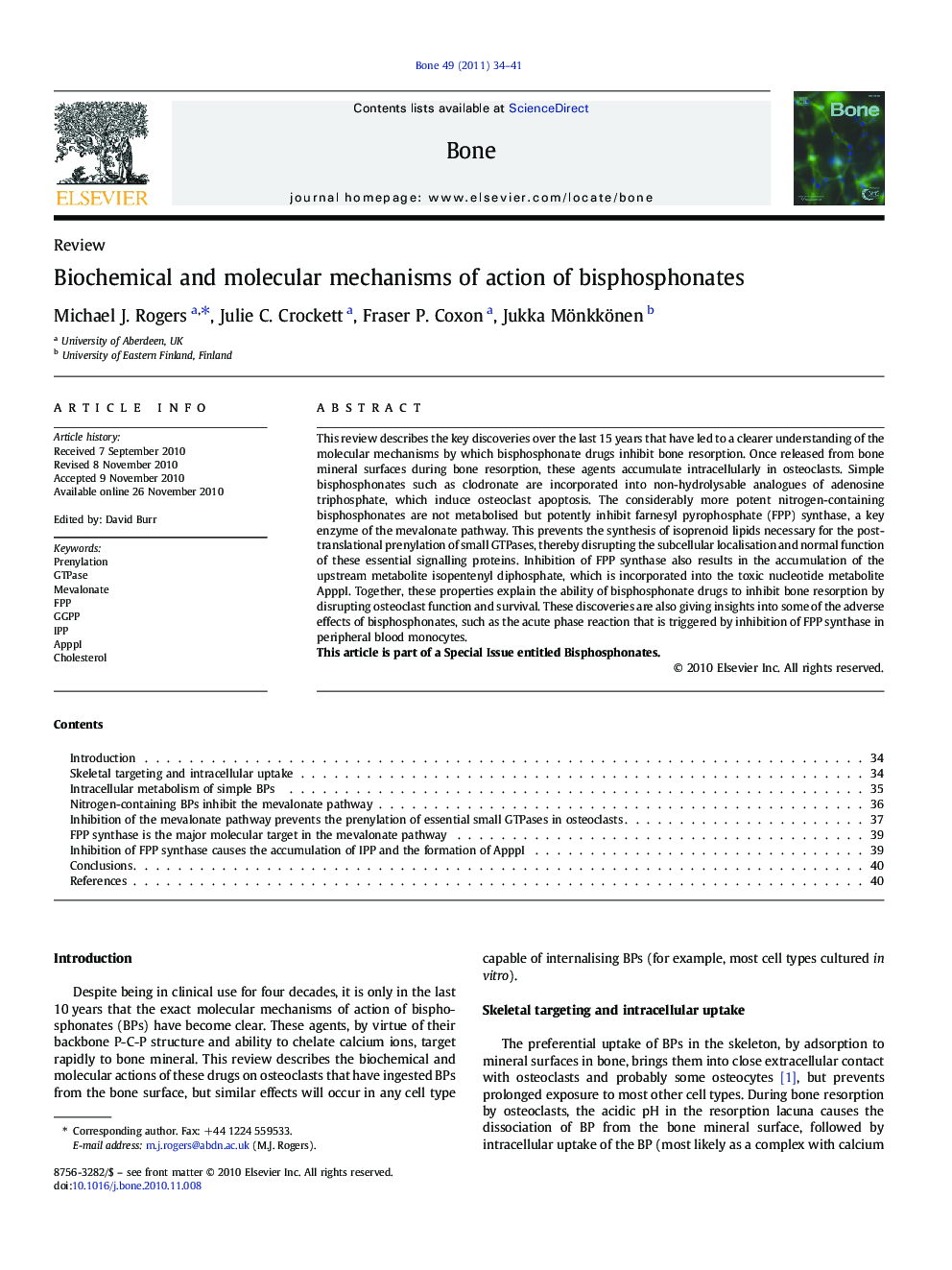| Article ID | Journal | Published Year | Pages | File Type |
|---|---|---|---|---|
| 5892030 | Bone | 2011 | 8 Pages |
This review describes the key discoveries over the last 15 years that have led to a clearer understanding of the molecular mechanisms by which bisphosphonate drugs inhibit bone resorption. Once released from bone mineral surfaces during bone resorption, these agents accumulate intracellularly in osteoclasts. Simple bisphosphonates such as clodronate are incorporated into non-hydrolysable analogues of adenosine triphosphate, which induce osteoclast apoptosis. The considerably more potent nitrogen-containing bisphosphonates are not metabolised but potently inhibit farnesyl pyrophosphate (FPP) synthase, a key enzyme of the mevalonate pathway. This prevents the synthesis of isoprenoid lipids necessary for the post-translational prenylation of small GTPases, thereby disrupting the subcellular localisation and normal function of these essential signalling proteins. Inhibition of FPP synthase also results in the accumulation of the upstream metabolite isopentenyl diphosphate, which is incorporated into the toxic nucleotide metabolite ApppI. Together, these properties explain the ability of bisphosphonate drugs to inhibit bone resorption by disrupting osteoclast function and survival. These discoveries are also giving insights into some of the adverse effects of bisphosphonates, such as the acute phase reaction that is triggered by inhibition of FPP synthase in peripheral blood monocytes.This article is part of a Special Issue entitled Bisphosphonates.
Research highlights⺠Bisphosphonates target rapidly to the skeleton and are internalised by osteoclasts. ⺠Simple bisphosphonates are metabolised to toxic analogues of ATP. ⺠Nitrogen-containing bisphosphonates inhibit the enzyme FPP synthase. ⺠Inhibition of FPP synthase prevents the prenylation of small GTPase proteins. ⺠Inhibition of FPP synthase causes the accumulation of the toxic metabolite ApppI.
